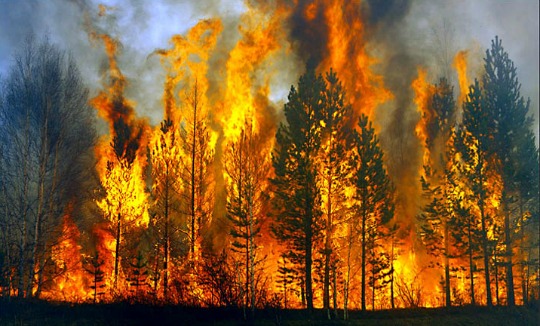Published on Monday, September 16, 2013 by Common Dreams
With more than 1,200 people missing and at least six dead, nature's fury in Colorado is the story of a warming planet

A home and car are stranded after a flash flood in Coal Creek destroyed the bridge near Golden, Colorado, September 12, 2013. Scientists say drought, fires, and global warming may have helped spur the flood. (Photograph by Rick Wilking, Reuters)
The number of officials deaths related to the flooding is now at six people.
Coming on the heals of forest fires and drought in the state, the rare late summer rains have created the 'perfect storm' for what scientists see as a climate change-driven disaster.
With even more rain expected in some areas on Monday, the disaster-struck western state continues to brace for high water and rescuers are saying harsh conditions are still preventing them from reaching hard-hit areas.
"The situation has deteriorated," Boulder County Emergency Management spokesman Andrew Barth said late Sunday. "There's a heavy, heavy fog, and rain is coming down hard."
And the Denver Post reports:
The flooding has been catastrophic for dozens of Front Range and Eastern Plains towns and cities.
Hundreds of local and federal rescuers crisscrossed remote slopes on foot and in ATVs trying to find people who have not been heard from in days.
Even as rescuers found stranded people and crossed them off the list of "the unaccounted for," that list continued to grow as more people called police asking for welfare checks on friends and relatives they couldn't reach.
The list across the state now tallies 1,253 people unaccounted for. The fear is that some of them are dead, Barth said.
For those stranded by the floods or needing rescue, authorities are urging th them to use "white sheets, reflective mirrors, flares and signal fires to alert helicopter pilots to their locations," according to the Boulder Daily Camera.
"The pilots are going to go anywhere and everywhere they can," said Gabrielle Boerkircher, a spokeswoman for Boulder County told reporters. "People need to be prepared to be evacuated. They need to try to flag down the choppers in any way they can."
As the disaster continues to unfold, climate experts continue to explain how the devastating—and unseasonal—rains are related to climate change. As National Geographic explains, what appears as an anomaly actually has a very sound explanation in the climate geoscience field:
Sandra Postel, National Geographic’s Freshwater Fellow, said that the long-term drought that has parched the area and gripped much of the Colorado River Basin over the past 14 years may be partly to blame for the severity of the floods.
Drought tends to harden the soil, she said. When rains do come, less of the water can absorb into the ground, so it quickly runs off the land.
Similarly, fires can lead to worse flooding, because they remove vegetation that can slow down and trap rainfall, Postel said. (See “Fire and Rain: The One-Two Punch of Flooding After Blazes.”) In 2012, the Boulder area was afflicted by the Flagstaff Fire. In 2010, the Fourmile Canyon fire caused damage to Boulder County worth $217 million.
Scientists have warned that increasing frequency and severity of wildfires and droughts may be symptoms of climate change, as much of the planet warms. That, in turn, can lead to more floods.
And writing at Common Dreams on Monday, author and nature photographer Subhankar Banerjee explains why—even amid an ongoing disaster—it's important to "connect the dots" between the floods in Colorado and planetary global warming:
Colorado has suffered repeated assaults—all caused in part (or amplified) by climate change. In addition to the immediate deaths and physical devastations, repeated assaults also create deep psychological scars. Furthermore, the American culture is deeply amnesiac—we forget a tragedy soon after the corporate media stops reporting on a particular catastrophe. But when a region is going through repeated assaults, before amnesia sets in, the next assault arrives. Time has come for us to do more than connect the dots through science. We also need to understand repeated assaults […] not just in Colorado, but wherever on earth it maybe taking place.
On Twitter:
Tweets about "#cofloods OR #boulderfloods OR #cowx " !function(d,s,id){var js,fjs=d.getElementsByTagName(s)[0],p=/^http:/.test(d.location)?’http’:’https’;if(!d.getElementById(id)){js=d.createElement(s);js.id=id;js.src=p+”://platform.twitter.com/widgets.js”;fjs.parentNode.insertBefore(js,fjs);}}(document,”script”,”twitter-wjs”);
_________________________________



